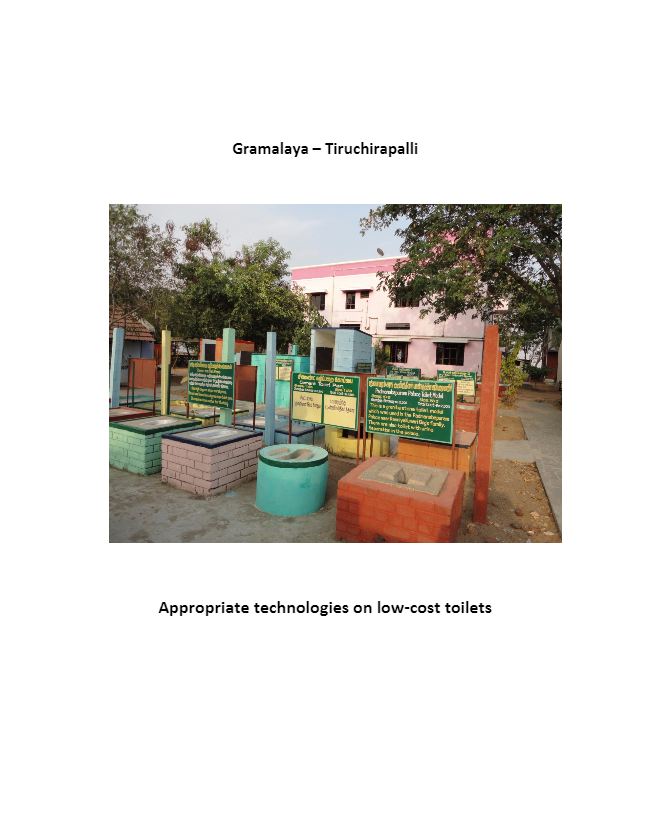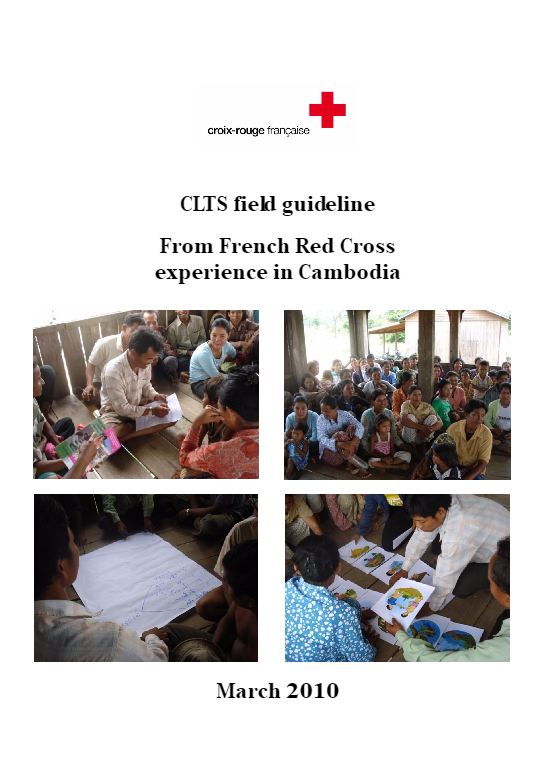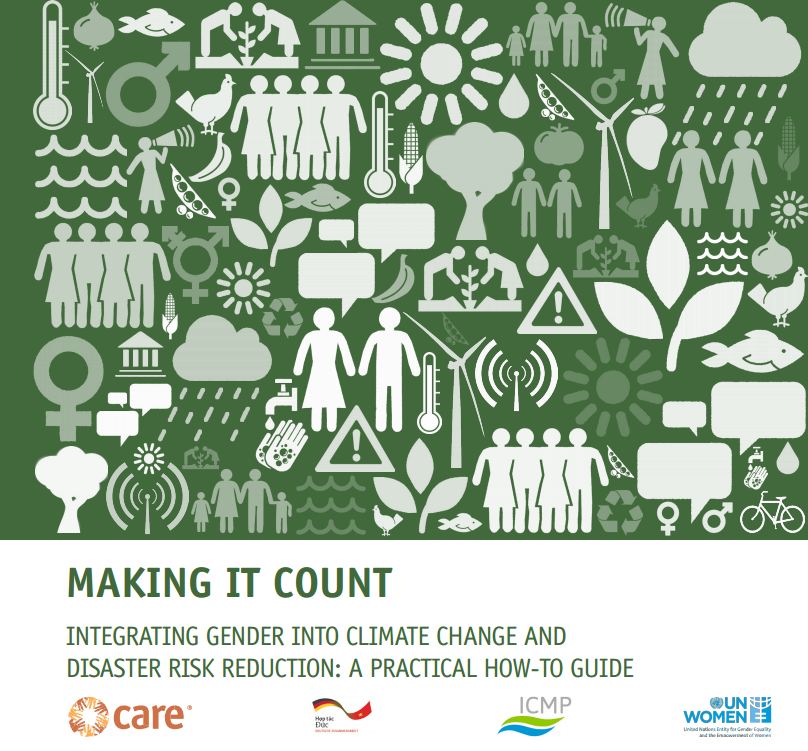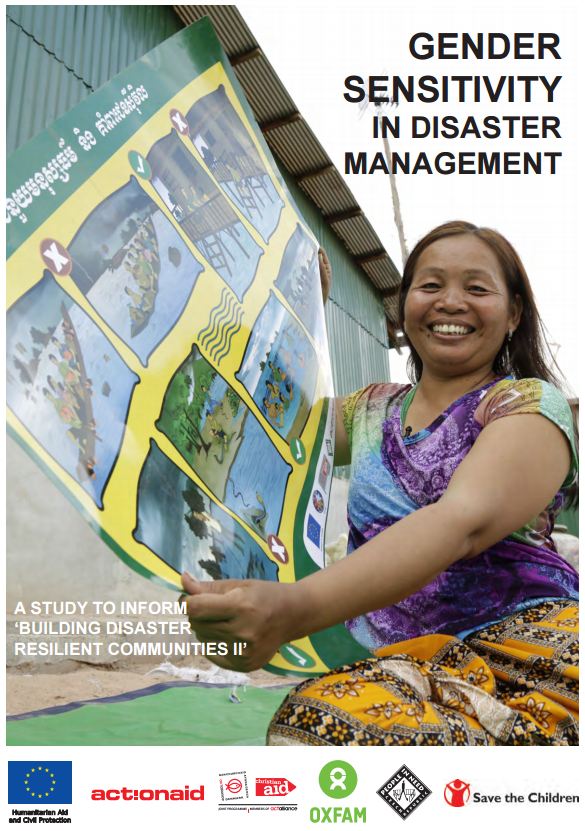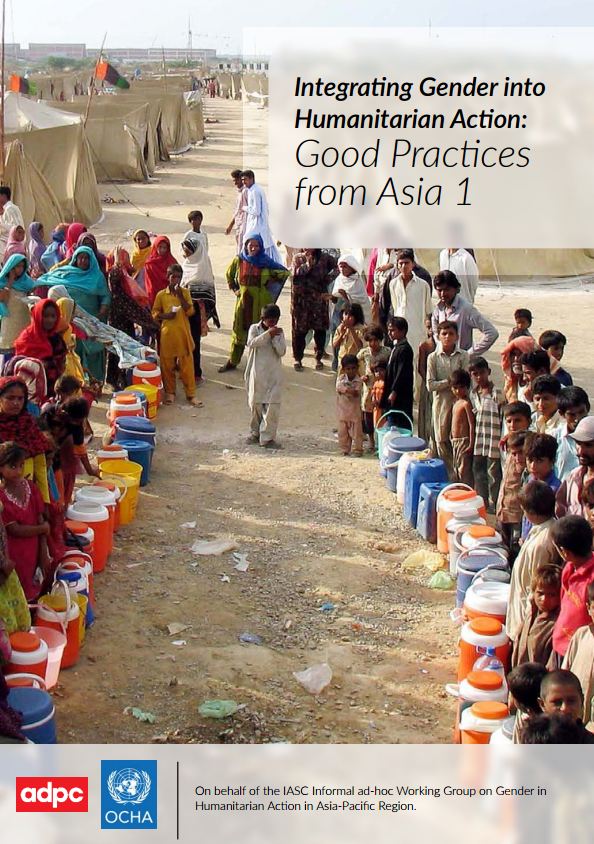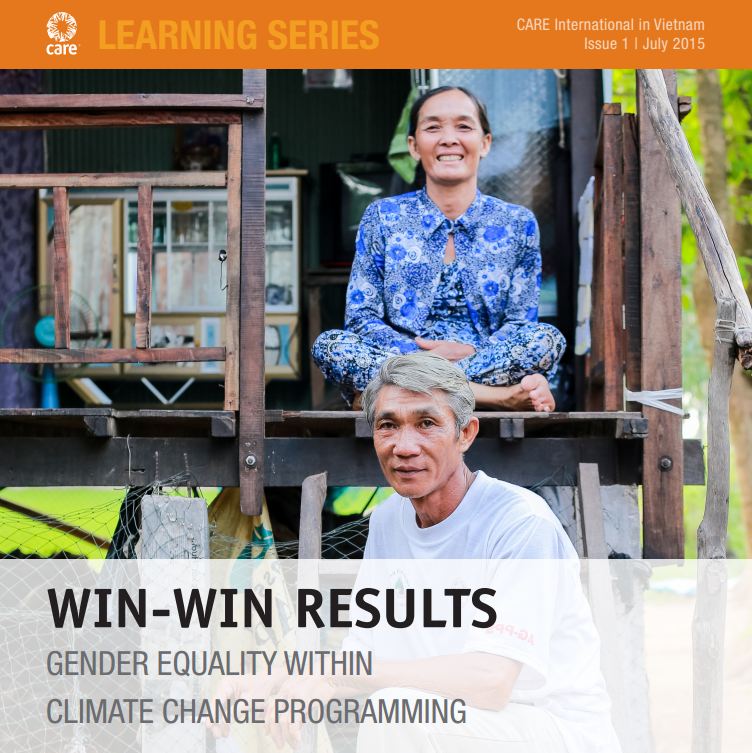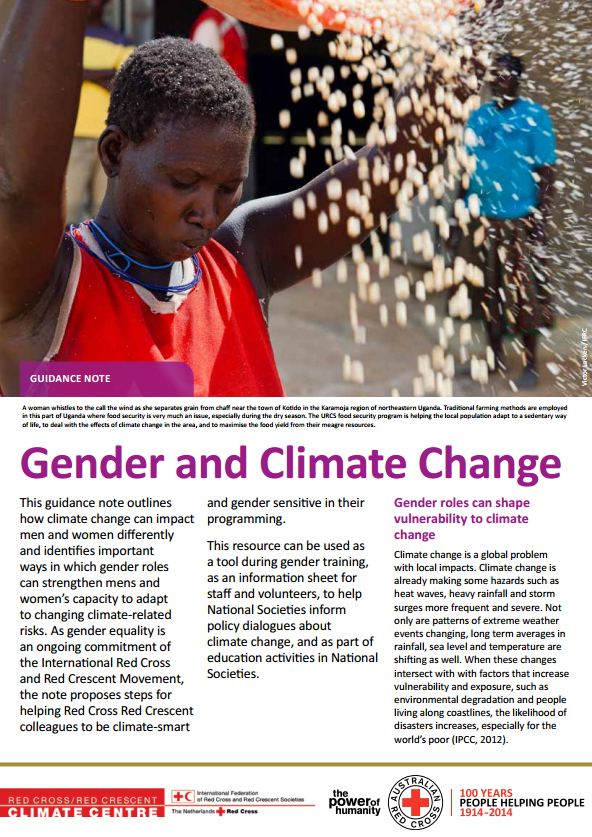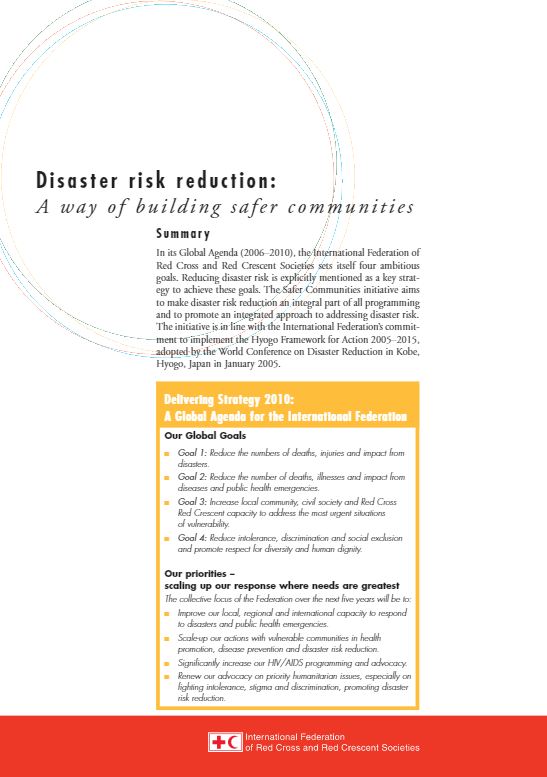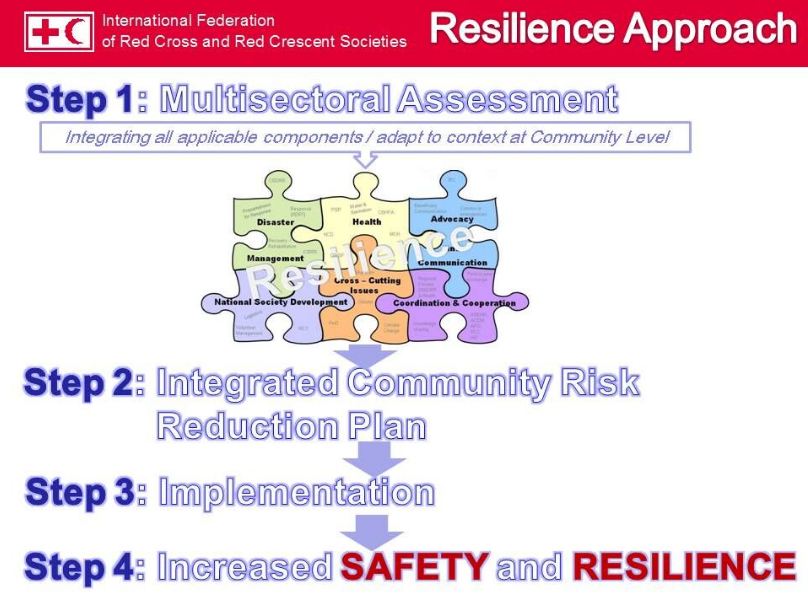Making it Count. Integrating Gender into Climate Change and Disaster Risk Reduction: A Practical How-To Guide
Purpose
This guide gives suggestions on how to address gender and women’s empowerment in climate change and disaster risk reduction (DRR) projects, or projects which have integrated climate change and DRR considerations.
Overview
Three steps are involved in conducting a gender analysis:
- Analyse the broader context: This includes exploring gender and sex-disaggregated secondary data; mapping policies and laws related to human rights and gender policies, and commitments and implementation of Conventions such as the Convention on the Elimination of all Forms of Discrimination Against Women (CEDAW); investigating wider cultural norms, values and practices related to gender (for example, expectations of how individuals should act, or customs related to marriage).
- Select and investigate key areas: investigating key areas related to the type of intervention being designed or implemented; exploring these areas through review of secondary data and exercises with participants and stakeholders; paying attention to the individual, relational and structural levels.
- Prioritise practical and strategic gender issues: identifying practical issues which involve addressing immediate gender issues and needs, such as providing financial training for women business owners so that they may improve their income. Practical needs should be addressed in order to ensure the equal and sustainable impact of projects. It is also important to identify strategic factors, such as laws or social norms, which must be tackled in order to transform unequal gender relations in the long-term. If strategic factors are ignored, practical solutions are likely to have minimal sustainable impact.
Usage: Guidance for project implementation
Audiences: Technical staff, Gender and diversity practitioners
Reference: Coulier, M. & Konstantinidis, D. (June 2015). Making it Count. Integrating Gender into Climate Change and Disaster Risk Reduction: A Practical How-To Guide. Care International in Vietnam (pp. 1-101). Available from: http://careclimatechange.org/tool-kits/making-it-count-integrating-gender/ [Accessed: 23 December 2015]
![]()
Gender Sensitivity in Disaster Management
Purpose
This study was undertaken to assess the outcomes of the ‘Building Disaster Resilient Communities II’ project in Cambodia, funded by the European Commission Humanitarian Aid and Civil Protection Office (ECHO) and co-funded by Disaster Risk Reduction consortium members between April 2014 and December 2015.
The study focuses on disaster management in Cambodia through a gender lens using Participation Action Research (PAR) methods to engage with local actors. It also includes a gender audit of key disaster risk reduction (DRR) guidelines, relevant policies and other key materials.
The study also examines the degree to which gender sensitivity is mainstreamed into current DRR guidelines, models and materials at both the government and the NGO levels. It considers the integration of the needs and concerns of women and men, in addition to any specific focus on redressing gender inequities.
Overview
- ‘Building Disaster Resilient Communities II’ has made a good start towards achieving a key indicator: Women’s involvement in DRR planning and Disaster Recovery increased by the end of the project. It is particularly valuable to improve the resilience of the poorest and most vulnerable, who are often women and girls. Overall progress is slow, however.
- As a result of structural and systemic challenges arising from Cambodia’s patriarchal bias, gender imbalances in favour of men persist. Disaster management operates within government structures where women’s opportunity for participation and leadership is limited and there are no quotas for women’s inclusion on disaster management (DM) committees or in leadership roles.
- Gender aspects of disaster can be found on pp. 30-33.
Usage: Learning from experience
Reference: Actionaid, Christianaid, DanChurchAid/Christian Aid, Oxfam, People in Need, Save the Children (2015). Gender Sensitivity in Disaster Management (pp. 1-92). Available at: https://www.humanitarianresponse.info/en/operations/cambodia/document/gender-sensitivity-disaster-management [Accessed 8 January 2016]
![]()
Integrating Gender into Humanitarian Action: Good Practices from Asia 1
Purpose
This document provides case studies of initiatives that have been taken in Asia to promote equal treatment of all in society before, during and after disasters.
Overview
The document provides an overview of the following case studies: a disaster risk reduction (DRR) gender checklist prepared to ensure the implementation of gender inclusive and responsive DRR in the Philippines; women-friendly spaces set up in Pakistan in the aftermath of floods that hit Pakistan in 2010. These centres provide safe spaces for women affected by gender-based violence, providing psychosocial support as well as opportunities to participate in local support groups and receive information about gender-based violence; and promoting gender equality in disaster response in Nepal after the earthquake in 2015.
Page 6 contains a gender emergency checklist for Pakistan and Afghanistan.
Usage: Learning from experience
Audiences: Gender and diversity practitioners, Technical staff, Volunteers
Reference: OCHA (2015). Integrating Gender into Humanitarian Action: Good Practices from Asia 1 (pp. 1-8). Available from: http://www.adpc.net/igo/category/ID991/doc/2015-vAQd72-ADPC-Integrating_Gender_into_Humanitarian_Action_1.pdf [Accessed: 21 December 2015].
![]()
Win-win Results: Gender Equality within Climate Change Programming
Purpose
This document presents key points on lessons learned by CARE in its work in Vietnam to promote gender equality and increase communities’ resilience to climate change. It also provides examples and recommendations on how this can be achieved.
Overview
- Understand resilience: common approaches and activities on gender in climate change tend to overlook differences between women and the factors apart from gender that influence women and men’s different abilities to make critical resilience decisions. Comprehending the specific context and lives of women and men is critical to support women’s leadership and voice and effectively transform negative gendered roles.
- Address gender-based barriers: factors such as women’s heavy workloads, limited decision-making power, and unequal access to, and control over, resources can prevent women and men from adopting resilience strategies. Agricultural and non-agricultural climate resilient livelihood strategies will be less effective and can inadvertently reinforce negative gender norms if they do not tackle these barriers.
- Adopt an integrated approach: both gender and climate change must be addressed simultaneously if increased resilience and gender equality are to be achieved.
- 18-19 contain a framework for gender transformative adaptation in Vietnam.
Usage: Training, Learning from experience
Audiences: Gender and diversity practitioners, Technical staff
Reference: Care International (July 2015). Win-win Results. Gender Equality within Climate Change Programming (pp. 1-13). Available from: http://careclimatechange.org/wp-content/uploads/2015/09/Learning-Series-1-Win-Win-Results-2015_09_04.pdf [Accessed: 21 December 2015].
![]()
Gender and Climate Change. Guidance note
Purpose
This guidance note outlines how climate change can impact men and women differently and identifies important ways in which gender roles can affect people’s capacity to adapt to changing climate-related risks. It proposes steps for helping Red Cross/Red Crescent colleagues to be climate-smart and gender-sensitive in their programming.
Overview
- The causes of men and women’s vulnerability to climate change are socially differentiated; that is, they are many and varied. Examples of differential vulnerability can be found on p. 3.
- Programmes that include gender sensitivity respond better to men and women’s needs – climate-smart programmes are no different. Such programmes can recognise the differential impacts of climate change on men and women, identify the issues and structures that can result in women’s disempowerment and transform disadvantage.
- Page 5 & 7 provide suggestions and examples, about how to consider gender while making programmes more ‘climate-smart’ at community and national society levels.
Usage: Policy guidance
Audiences: Gender and diversity practitioners, Technical staff
Reference: Australian Red Cross (June 2014). Gender and Climate Change. Guidance note (pp. 1-12). Available from: http://www.redcross.org.au/files/2014_Gender_and_Climate_Change.pdf [Accessed: 21 December 2015].
![]()


![Plan International: Low-Cost Latrine Design [Burmese] - Indian Perspective - Sanitation](https://www.rcrc-resilience-southeastasia.org/wp-content/uploads/2016/08/Capture-232.jpg)
